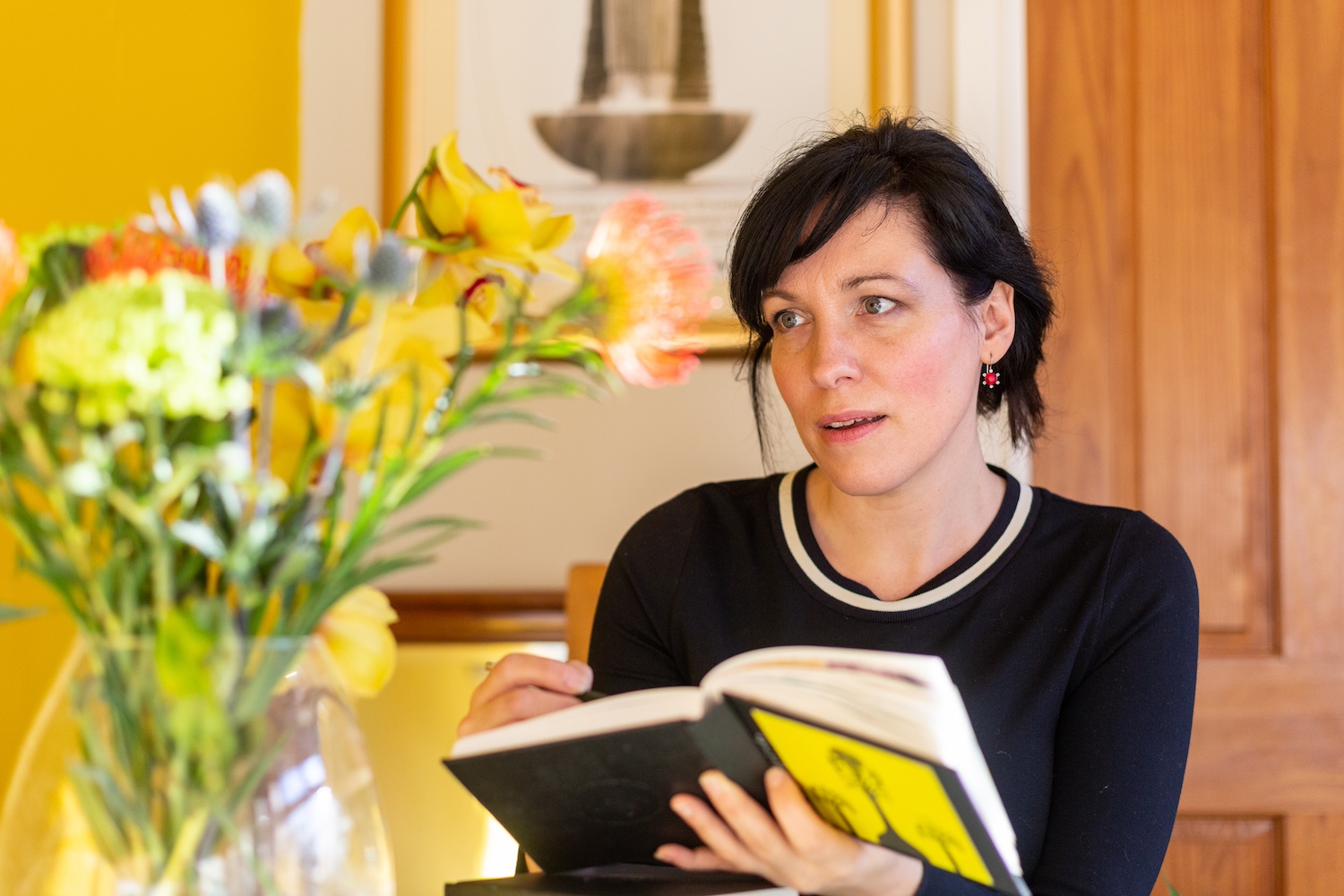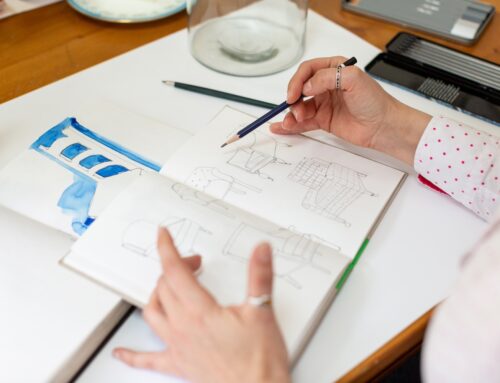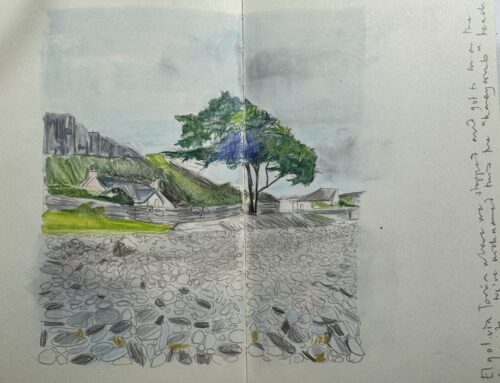In an era of measurable outcomes, algorithm-driven learning, and relentless productivity, how do we preserve the sense of wonder that lies at the heart of creative practice?
For those of us rediscovering our creative potential through drawing, this question looms large.
The balance between disciplined learning and the sheer joy of artistic discovery is not an easy one to strike.
Yet it is precisely at the intersection of these two forces that creativity flourishes. In his book “Resonance. A Sociology of Our Relationship to the World” Hermut Rosa’s thesis argues, that our modern obsession with bringing everything within our control—from peak experiences to algorithmic recommendations—risks alienating us from the simple joys of encountering the world with an open mind.
In the context of drawing, this alienation manifests itself when we approach the practice as a purely transactional pursuit: mastering techniques for the sake of outcomes, not for the intrinsic delight of creation. But what if we could combine logical, structured learning with a deliberate cultivation of wonder?
What if learning itself became a gateway to joy and connection? The tension between wonder and the logic of learning to draw, like any skill, requires structure. There are fundamental methods, techniques, and principles that must be understood and practiced to develop proficiency.
Without these, we risk stagnating, unable to bring our ideas to life.
Yet focusing too narrowly on technique can extinguish the very spark that led us to draw in the first place.
Pablo Picasso famously said, “It took me four years to paint like Raphael, but a lifetime to paint like a child.”
This speaks to the delicate balance between disciplined mastery and unrestrained creativity. Logical learning provides the scaffolding, but wonder breathes life into the work. Without wonder, our art becomes mechanical; without logic, it lacks direction. The good news is that these two forces are not inherently at odds.
In fact, they can be mutually reinforcing.
Structured learning builds confidence, allowing us to take creative risks. At the same time, moments of wonder can motivate us to keep learning, as we glimpse the infinite possibilities that lie ahead.
How do wonder and learning meet? How can we foster a practice that honours both wonder and logic?
Through my teaching experience, I’ve identified eight key levers that unlock creative potential: method, mindset, momentum, practice, accountability, time, impact, and joy.
Each of these levers plays a role in bridging the gap between disciplined learning and the expansive joy of creativity.
- Method: Building a Solid Foundation. Method is about understanding the principles that govern drawing—the basic skills. Mastery of these skills gives us the tools to express ourselves with clarity and precision. Yet methods should not be rigid constraints. Instead, they’re stepping stones that lead us toward freedom. Leonardo da Vinci’s meticulous studies of anatomy are a perfect example. His technical drawings reveal not only a profound understanding of the human body but also a deep reverence for its beauty. Logic and wonder coexist in every line.
- Mindset: Embracing Curiosity. A growth mindset is crucial for balancing logic and wonder. When we approach learning with curiosity rather than fear, mistakes become opportunities to explore rather than obstacles to overcome. “Every artist was first an amateur,” said Ralph Waldo Emerson. The willingness to experiment and fail is essential to rediscovering the joy of drawing. But there are other skeletons that lurk in our proverbial closets that must be aired – procrastination, perfectionism for one (or two) that stem from cultural conditioning.
- Momentum: Building Creative Habits. Momentum comes from consistent practice. But this doesn’t mean grinding through exercises without joy. Instead, it’s about finding a rhythm that allows for both focus and play. Daily drawing challenges or sketchbook journaling are great ways to build momentum while staying open to moments of inspiration.
- Practice: The Gateway to Flow. Deliberate practice hones our skills, but it also opens the door to flow—the state of being fully immersed in the creative process. Mihaly Csikszentmihalyi, the psychologist who popularised the concept of flow, observed that it is in these moments of deep focus that we experience some of the greatest joy in life. Practice, paradoxically, is what makes spontaneity possible.
- Accountability: Learning Together. Accountability keeps us moving forward, even when motivation wanes. Whether through an art class, a mentor, or a community of fellow artists, sharing our work with others fosters connection and inspiration. As Vincent van Gogh wrote to his brother Theo, “What would life be if we had no courage to attempt anything?” Encouragement from others gives us that courage.
- Time: Slowing Down to See Time is perhaps the most precious gift we can give ourselves as artists. In a culture of instant gratification, the act of slowing down to observe the world deeply is radical. When we take the time to truly see, we invite wonder into our practice. “To draw, you must close your eyes and sing,” said Pablo Picasso, reminding us that creativity thrives in moments of presence.
- Impact: Connecting to Something Larger. Art is not created in a vacuum. When we draw, we are engaging with the world and leaving our mark on it. Recognising the impact of our work—whether it’s the joy it brings to others or the personal meaning it holds—grounds our practice in purpose. This sense of connection fuels both wonder and learning. For some this stretches deeper as it generates ideas that may lead to income generation and changes to day to day lifestyle as it has done to me.
- Joy: Returning to Play. Finally, joy is the ultimate destination. It’s what sustains us through the challenges of learning and the inevitable frustrations of creative practice. When we draw for the sheer delight of it, we rediscover the playful curiosity we had as children. And in those moments, we transcend the transactional mindset that Rosa warns against. We are no longer creating to achieve something; we are creating because it feels good to be alive.
The Call to Action, if you’re ready to dive deeper into your creative practice, is to explore my 8-Lever Masterclass and put them into practice during a 3 day drawing bootcamp with me. I show you how to draw whilst exploring your responses to each of these core themes. We integrate method, mindset, momentum, practice, accountability, time, impact, and joy to help rediscover your creative potential through a drawing process.
Through guided lessons, practical exercises, and a supportive community, you’ll learn not only how to draw but also how to reconnect with the sense of wonder that makes art so transformative.







